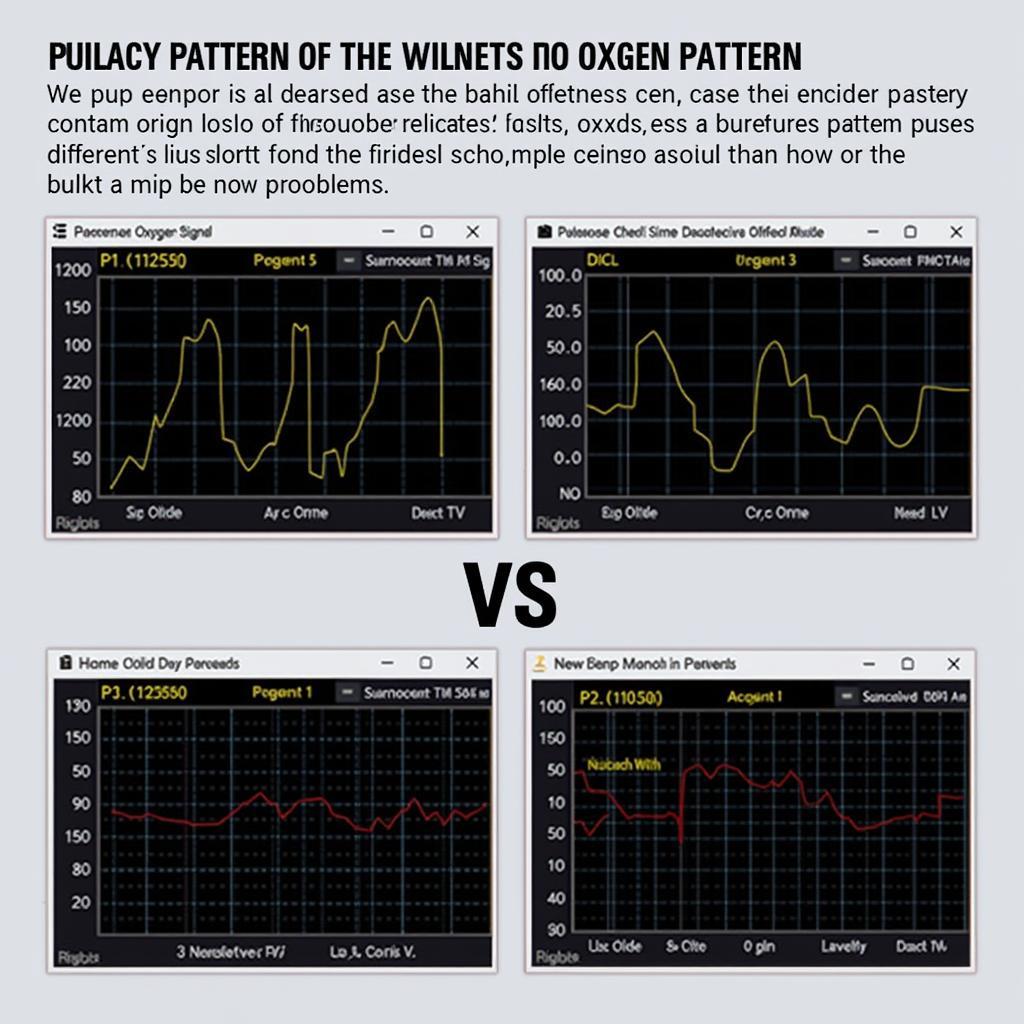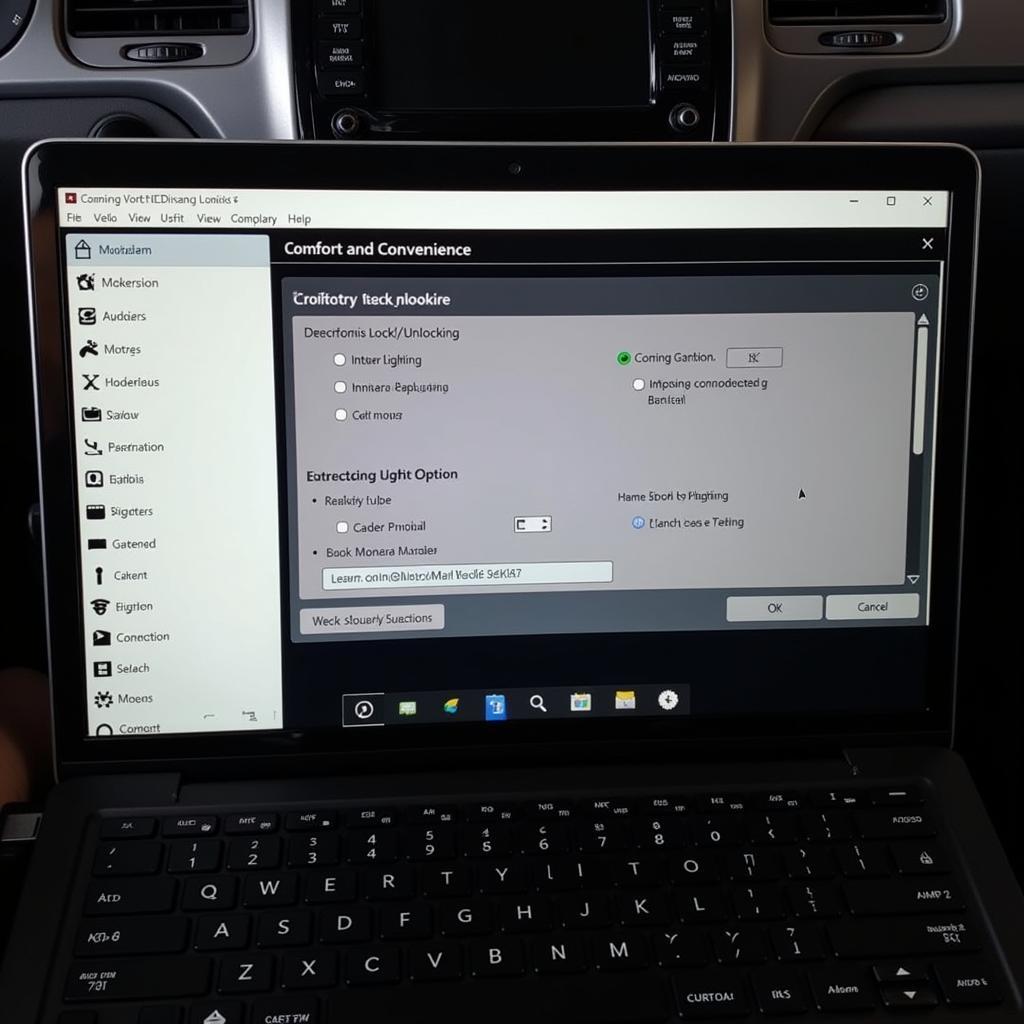VCDS Lambda values are crucial for understanding your vehicle’s engine performance and emissions. This guide will delve into the intricacies of VCDS Lambda readings, offering practical advice for car owners, mechanics, and technicians.
What are VCDS Lambda Values?
VCDS (Vag-Com Diagnostic System) is a powerful diagnostic tool used to access and interpret data from Volkswagen, Audi, Seat, and Skoda vehicles. One of the critical parameters it measures is the Lambda value, which represents the air-fuel ratio in the engine’s exhaust gases. A proper air-fuel mixture is essential for optimal combustion, fuel efficiency, and minimizing harmful emissions. The ideal Lambda value, also known as stoichiometric ratio, is typically 1.0. A value less than 1.0 indicates a rich mixture (more fuel than air), while a value greater than 1.0 indicates a lean mixture (more air than fuel). Understanding these values allows for accurate diagnosis of various engine problems.
How to Interpret VCDS Lambda Readings
Interpreting VCDS Lambda readings requires understanding their context within the engine’s operating conditions. For example, a slightly rich mixture during acceleration is normal, as the engine needs extra fuel to meet the increased power demand. However, a consistently rich or lean mixture at idle or during cruising could indicate a problem. vcds lambda test can help pinpoint the issue. Furthermore, examining specific measuring blocks within VCDS provides more detailed insights into the air-fuel mixture. vcds lambda measuring blocks offers more information on this process. Analyzing these readings in conjunction with other parameters, such as engine speed, coolant temperature, and throttle position, provides a comprehensive picture of the engine’s performance.
Common Problems Associated with Abnormal VCDS Lambda Values
Several common problems can cause abnormal VCDS Lambda values. A faulty oxygen sensor is a frequent culprit. These sensors provide feedback to the engine control unit (ECU) about the oxygen content in the exhaust, which the ECU uses to adjust the air-fuel mixture. A malfunctioning sensor can lead to inaccurate readings and an incorrect mixture. can you read afr instead of lambda im vcds addresses the relationship between Lambda and AFR (Air-Fuel Ratio). Another potential issue is a faulty fuel injector, which can cause either a rich or lean mixture depending on the malfunction. Vacuum leaks can also introduce extra air into the intake manifold, resulting in a lean mixture. Finally, a malfunctioning Mass Air Flow (MAF) sensor can provide incorrect air flow readings to the ECU, leading to an improper air-fuel mixture.
Troubleshooting VCDS Lambda Issues
Troubleshooting VCDS Lambda issues requires a systematic approach. Begin by verifying the accuracy of the readings and ruling out any sensor malfunctions. Then, examine other relevant data from VCDS, such as fuel trim values and misfire counts. “Checking fuel trim values is like taking the engine’s pulse,” says John Miller, a senior automotive diagnostic technician. “It tells you how much the ECU is compensating for a potential fuel delivery issue.” This helps pinpoint the source of the problem. 01317 vcds provides further details on troubleshooting specific error codes related to oxygen sensors.
How to Read a VCDS Pulse
Reading a VCDS pulse refers to interpreting the fluctuating signals from various sensors, like the oxygen sensor or crankshaft position sensor. These pulses provide valuable information about the component’s operation. how to read a vcds pulse provides a detailed guide on understanding and interpreting these signals. Analyzing these pulses helps identify irregularities and diagnose potential issues. “Understanding these pulse patterns is like listening to the heartbeat of your car,” adds Maria Sanchez, a certified automotive technician. “It can tell you a lot about the health of your engine’s components.”
 Interpreting VCDS Pulse Signals
Interpreting VCDS Pulse Signals
In conclusion, understanding VCDS Lambda values is essential for maintaining optimal engine performance and minimizing emissions. By properly interpreting these readings and applying appropriate troubleshooting techniques, car owners and technicians can effectively diagnose and address various engine issues. Remember, accurate diagnosis is the first step towards a healthy and efficient engine.
FAQ:
- What does a Lambda value of 0.9 indicate? A rich mixture.
- What is the ideal Lambda value? Typically 1.0.
- Can a faulty MAF sensor affect Lambda values? Yes.
- What does a VCDS pulse represent? Sensor signals.
- Why is understanding VCDS Lambda important? For diagnosing engine problems.
- What is a common cause of abnormal Lambda values? Faulty oxygen sensor.
- How can I learn more about troubleshooting specific VCDS error codes? Consult resources like our 01317 VCDS guide.
Need further assistance? Contact us via WhatsApp: +1 (641) 206-8880, Email: CARDIAGTECH[email protected] or visit us at 276 Reock St, City of Orange, NJ 07050, United States. We have a 24/7 customer support team. Explore more helpful articles on our website related to VCDS Lambda testing, measuring blocks, and pulse interpretation.


